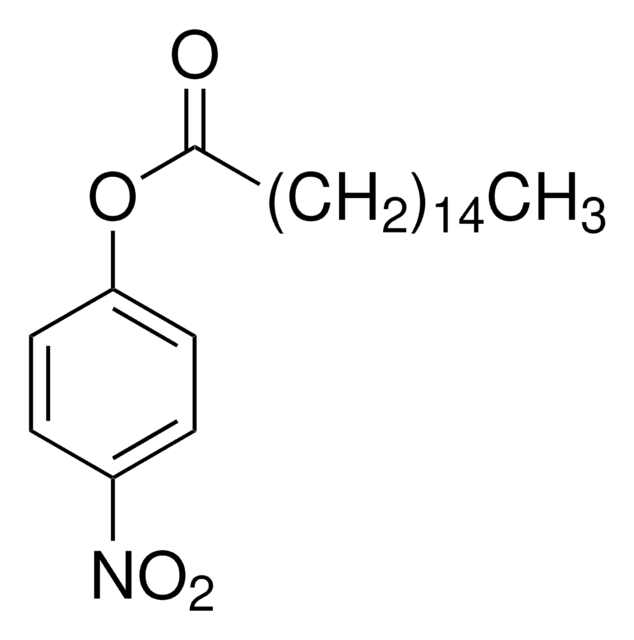701122
Iron(III) chloride
sublimed grade, ≥99.9% trace metals basis
Sinonimo/i:
Ferric chloride, Iron trichloride, Molysite
About This Item
Prodotti consigliati
Grado
sublimed grade
Densità del vapore
5.61 (vs air)
Tensione di vapore
1 mmHg ( 194 °C)
Saggio
≥99.9% trace metals basis
Forma fisica
powder or crystals
Impiego in reazioni chimiche
reagent type: catalyst
core: iron
Caratteristiche più verdi
Catalysis
Learn more about the Principles of Green Chemistry.
sustainability
Greener Alternative Product
tecniche
cell culture | mammalian: suitable
Impurezze
≤1000.0 ppm Trace Metal Analysis
Punto di fusione
304 °C (lit.)
applicazioni
battery manufacturing
Categoria alternativa più verde
Stringa SMILE
Cl[Fe](Cl)Cl
InChI
1S/3ClH.Fe/h3*1H;/q;;;+3/p-3
RBTARNINKXHZNM-UHFFFAOYSA-K
Cerchi prodotti simili? Visita Guida al confronto tra prodotti
Descrizione generale
Applicazioni
- As a precursor to prepare Fe(III)-chlorophyll complex. Fe(III) enhances the performance of chlorophyll as a dye sensitizer in DSSCs by forming complex compounds with metal-ligand charge transfer properties, leading to increased efficiency and improved paramagnetic properties.
- As a catalyst /modifying agent to prepare high performance porous carbon for lithium-ion battery anodes. The addition of FeCl3 enhances the graphitization of porous carbon without significantly affecting the layer spacing and also the specific surface area and pore volume of porous carbon.
- As a co-catalyst to fabricate liquid catalyzed fuel cell (LCFC) for direct conversion from carbohydrates to electricity. It helps to improve the hydrolysis of carbohydrate and enhances the electron transfer from carbohydrates to anode.
Avvertenze
Danger
Indicazioni di pericolo
Consigli di prudenza
Classi di pericolo
Acute Tox. 4 Oral - Eye Dam. 1 - Met. Corr. 1 - Skin Irrit. 2
Codice della classe di stoccaggio
8B - Non-combustible corrosive hazardous materials
Classe di pericolosità dell'acqua (WGK)
WGK 1
Punto d’infiammabilità (°F)
Not applicable
Punto d’infiammabilità (°C)
Not applicable
Dispositivi di protezione individuale
dust mask type N95 (US), Eyeshields, Faceshields, Gloves
Certificati d'analisi (COA)
Cerca il Certificati d'analisi (COA) digitando il numero di lotto/batch corrispondente. I numeri di lotto o di batch sono stampati sull'etichetta dei prodotti dopo la parola ‘Lotto’ o ‘Batch’.
Possiedi già questo prodotto?
I documenti relativi ai prodotti acquistati recentemente sono disponibili nell’Archivio dei documenti.
I clienti hanno visto anche
Articoli
Professor Randal Lee (University of Houston, USA) discusses design considerations for iron oxide magnetic nanospheres and nanocubes used for biosensing, including synthetic procedures, size, and shape. The effects of these variables are discussed for various volumetric-based and surface-based detection schemes.
Lithium-Ion Battery Performance: Dependence on Material Synthesis and Post‑Treatment Methods
Il team dei nostri ricercatori vanta grande esperienza in tutte le aree della ricerca quali Life Science, scienza dei materiali, sintesi chimica, cromatografia, discipline analitiche, ecc..
Contatta l'Assistenza Tecnica.






